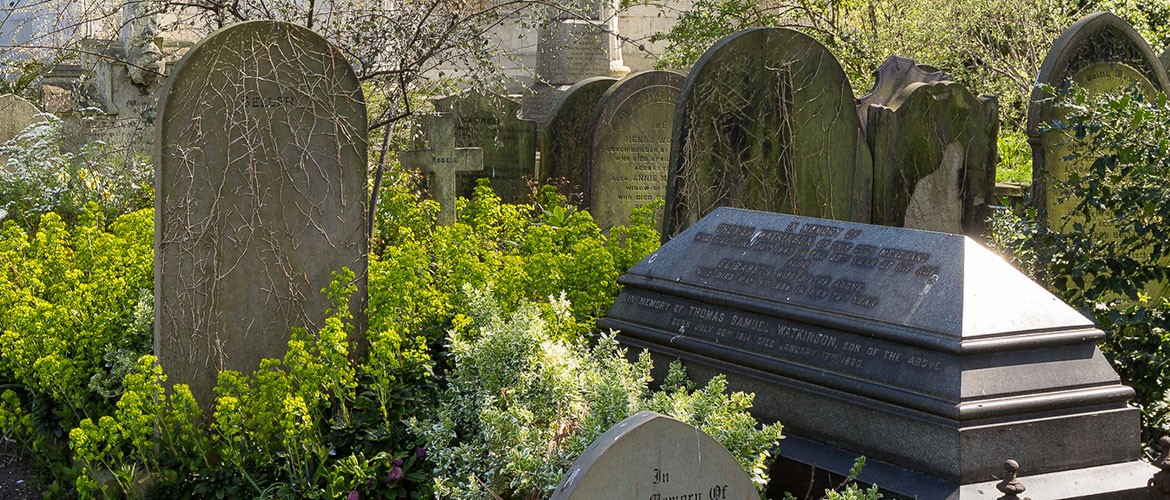Writer Julian Cole explains why York is such a great place to stage a fictional killing or two
I pushed a woman down the stairs after bashing her head in. The house where she died was in a road close to York Cemetery. The house wasn’t important, but the resting place was.
The woman was an artist called Jane Wragge and although she was dead before the reader turned the first page, her presence, in her paintings and her hidden diaries, is there throughout the book.
That book was called Felicity’s Gate, and in a sense the cemetery, that ‘Garden Of Death’ as so exhaustively researched by the late York historian Hugh Murray, was the main character in the novel.
 In my first novel, The Amateur Historian, the kidnapping of a girl in modern York was tied in with the fate of another girl who lived and died a century before, while in The Baedeker Murders a German pilot who comes to York to apologise for bombing the city ends up dead in Guildhall.
In my first novel, The Amateur Historian, the kidnapping of a girl in modern York was tied in with the fate of another girl who lived and died a century before, while in The Baedeker Murders a German pilot who comes to York to apologise for bombing the city ends up dead in Guildhall.
York is a relatively peaceable city, or it is if you ignore the hen-party hordes and their drunken unruliness. So why should fictional crime be set here?
A number of writers have used the city as a backdrop for their crime fiction, and no discussion of this can start without considering John Baker and his Sam Turner novels.
Baker is less visible today, but 15 years or so ago he was a name in crime fiction, praised by none other than Val McDermid as follows:
Helen Cadbury is a more recent writer to use York as a setting, with her debut To Catch A Rabbit, which is to be followed next month by the second book in her Sean Denton series, Bones In The Nest. Helen is already working on a third novel.
With fictional crime in mind, two events featuring York crime writers are being staged soon. The first is a York Authors event at Dringhouses Library on Tuesday.
The writers taking part are Pauline Kirk (writing as PJ Quinn), Tom Harper, Adrian Paul Fayter and myself, in an event to mark National Crime Reading Month.
Time-slip crime
York Explore
Thu Jun 25 @ 6pm
£2
For many readers, of course, every month is set aside for crime reading. From the panellists, Pauline doubles up as PJ Quinn in collaboration with her daughter, Jo Summers, for the 1950s novels featuring DI Ambrose, set not in York but in an imaginary town.
The books are Foul Play, Poison Pen and Close Disharmony.
Tom Harper is one of York’s most successful novelists, with a whole string of page-turning thrillers to his name. His novels often, although not always, have a time-slip element, with a modern story running parallel to an ancient story.
In Orpheus Descent, for example, the mystery of a vanished woman is tied up with a journey made by Plato 2,500 years earlier.
Adrian Paul Fayter is the author of Death Benefit, featuring Larry Di Palma, who always wanted to be a detective, but has to make to with fraud investigation for the Benefits Agency.
 Jump forward two days, and we have another criminal diversion – Getting Away With Murder: Why We Love Crime Fiction. This one is at York Explore at 6pm, on Thursday, June 25, and tickets cost £2.
Jump forward two days, and we have another criminal diversion – Getting Away With Murder: Why We Love Crime Fiction. This one is at York Explore at 6pm, on Thursday, June 25, and tickets cost £2.
The panel on this occasion will feature Sheila Quigley, David Mark, Alfie Crow, Nick Quantrill and myself, with a promise to explore the peculiar pleasures of crime fiction.
Sheila Quigley is a north-eastern writer and author of the Seahills series. David Mark is a former journalist who worked for years in Hull, the city whose streets became the setting for his Detective Sergeant Aector McAvoy novels.
David is also reader is residence for next month’s Old Peculier Crime Writing Festival in Harrogate.
Alfie Crow is the author of Crow, a comic thriller about Mike Rant, out of work actor, accidental bank robber and hit man. Nick Quantrill is a crime writer from Hull, whose Joe Geraghty novels are published by Caffeine Nights.
